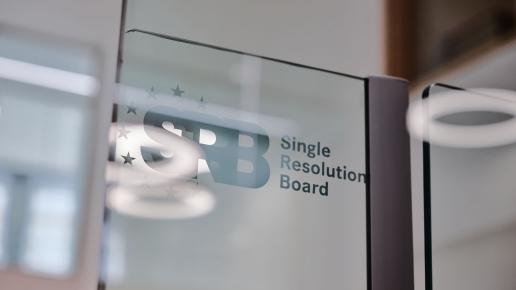MREL is a key tool to improve banks’ resolvability and safeguard taxpayers’ money, writes Elke König
As the SRB keeps saying, MREL is a journey. It is a journey with a clear destination – to ensure banks’ resolvability, thereby strengthening financial stability and safeguarding taxpayers’ money. The SRB is not alone on this journey. Alongside the national resolution authorities (NRAs), we engage closely with the industry to illustrate the envisaged methodology, seek feedback and define step by step the final policy.
In December 2017 the SRB published its MREL policy for 2017, detailing the progress made and the work awaiting us. The SRB has taken a gradual, multi-year approach to MREL, that takes into account the specificities of the banks under its remit, with the goal of maintaining proportionality in the system while preserving a level playing field and upholding high resolution standards across the Banking Union.
The SRB, together with the Banking Union NRAs, started to develop its MREL approach in 2016, with informative targets that sought to enable banks to prepare for their future MREL requirements. For the 2017 resolution planning cycle, the SRB moved from informative targets to bank-specific, binding consolidated MREL targets for the majority of the largest and most complex banks in the euro area, including all global systemically important institutions (G-SIIs).
As in 2016, the 2017 MREL is calculated at consolidated level as the sum of a loss absorption amount and a recapitalisation amount, complemented by a market confidence charge. As a new feature, some bank-specific adjustments were introduced for the recapitalisation amount and the market confidence charge, by referring to the effect of balance sheet depletion, the use of recovery options, or restructuring plan divestments and sales.
The SRB has also moved forward with respect to the quality of MREL, by introducing a first subordination benchmark for other systemically important institutions (O-SIIs) in addition to the subordination for G-SIIs introduced in 2016. In concrete terms, G-SIIs will be required to meet a minimum subordination level equal to 13.5% RWA plus the combined buffer requirement (CBR); for O-SIIs, the benchmark is set at 12% of RWA plus the CBR.
Regarding the eligibility of liabilities, the SRB has clarified that non-covered non-preferred deposits are excluded unless there is evidence that they cannot be withdrawn within a one-year period. The SRB also took a cautious approach towards liabilities governed by the laws of a country outside the EU, which are generally excluded, unless there is evidence that the write-down or bail-in of those liabilities by the SRB would be recognised by the courts of that country.
For other banks within its remit, the SRB considered that an iterative process, without taking an immediate binding decision on MREL, is preferable. For the less significant institutions that are not within its remit, the SRB will act through its oversight function and assess the conformity of draft resolution measures for LSIs that NRAs notify us, in accordance with the SRM Regulation. These include resolution measures to be adopted, such as draft resolution plans, MREL and resolvability assessment, as well as decisions to apply simplified obligations.
MREL will continue to be one of the key areas of work for the SRB in 2018. To underpin resolution planning, the SRB will develop guidance for the Internal Resolution Teams on solo/internal MREL and MREL calibration under transfer strategies. Internal loss-absorbing capacity is crucial to ensure that, within a group, losses are passed from the entities where they originate to those entities where resolution action is coordinated. The SRB will also work further on defining the need for subordination, not least in light of assessing any challenges from the NCWO principle.
The SRB will develop its approach based on the current legislative framework, and strive to implement internal MREL for banking groups with resolution colleges during the 2018 planning cycle. At the same time, we are following closely the ongoing negotiations on the revision of the BRRD and SRMR to prepare for a revision of our MREL policy, including on bank-specific targets and transition periods.
MREL is a crucial tool to improve banks’ resolvability. No responsible management should take a ‘wait and see’ approach – the direction of the journey is clear.
Contact our communications team
Recent news

The body responsible for managing banks in crisis in Europe is celebrating its 10th anniversary and claims that Popular's 2017 resolution has been...

In last June, Parliament and Council have clinched a political deal that is applicable to all the EU member states, and which can be seen as a step...

A success story Deposit Guarantee Schemes (DGSs) have a proven track record of protecting depositors and enhancing financial stability, and are a...



